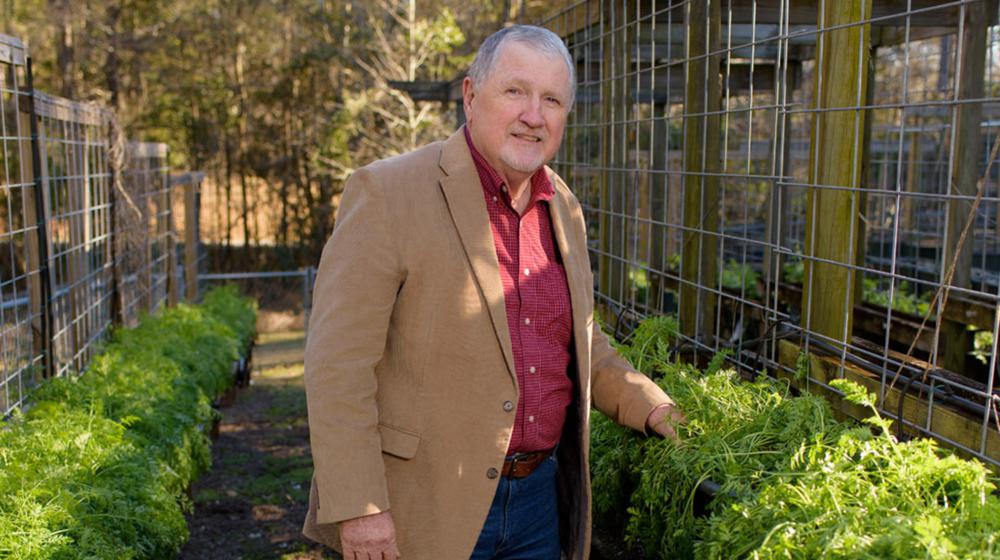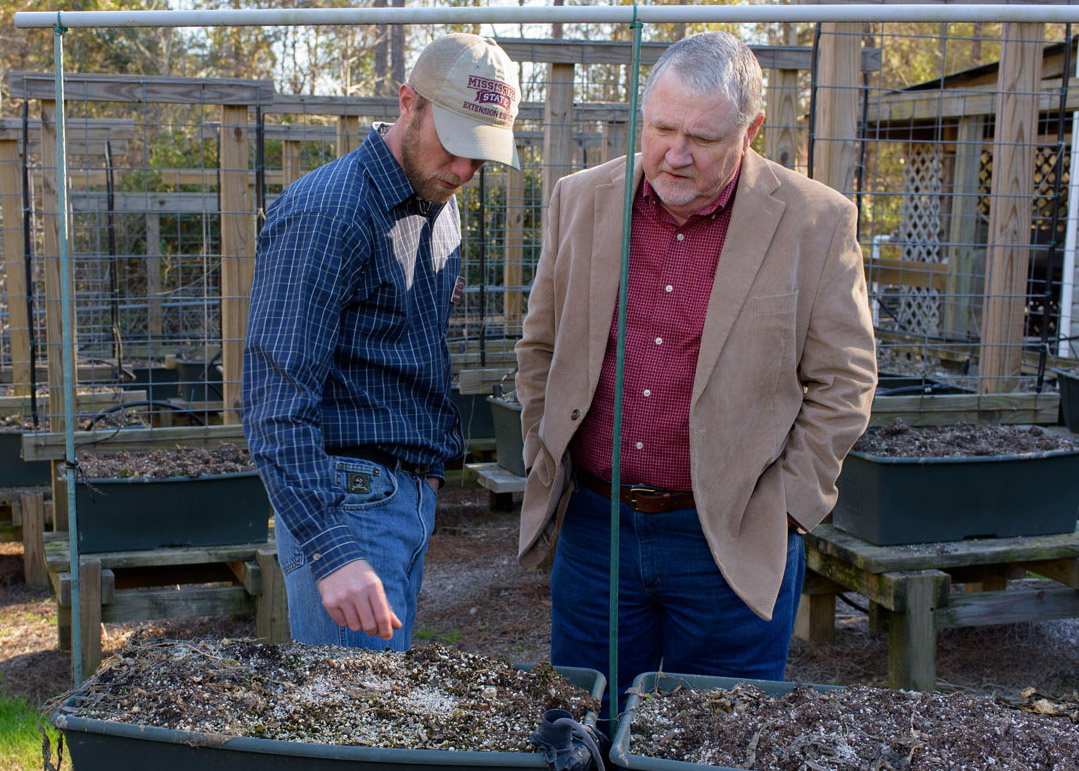A Bushel and a Peck

John Monroe, Lamar County Soil and Conservation District administrator
Extension Helps Client Grow Bountiful Harvest
Story by Susan Collins-Smith • Photos by Kevin Hudson and Gary Bachman
John Monroe has been familiar with the Mississippi State University Extension Service since he was a child.
“I grew up on a small farm in George County,” says Monroe. “My dad took gardening seriously, and we weren’t blessed with the best soil. So my dad worked very closely with the county agent. He’d come out to our place on a regular basis.”
In college, Monroe interned with Extension and eventually went to work with the U.S. Department of Agriculture’s Soil Conservation Service. Over the years, he’s maintained both a professional and personal relationship with Extension, an organization dedicated to improving people’s lives with research-based education.
“I’ve had a 42-year professional conservation career, and Extension has always been one of our partners because of the information and assistance they provide,” says Monroe, who now works for the Lamar County Soil and Water Conservation District. “Conservation education is a priority for us, and we teach everyone from schoolchildren to senior adults.”
A life-long vegetable gardener, Monroe relies on Extension for advice about managing his backyard garden. Several years ago, he converted his raised-bed garden to a raised-container garden. He grows several summer vegetables, including corn, tomatoes, cucumbers, okra, bell peppers, yellow squash, butter beans, and green beans. He also raises some fall crops, including lettuce, turnips, and carrots.

“My dad got me started in this type of gardening,” says Monroe, who earned Extension’s Master Gardener certification 4 years ago. “He had 55 containers, and I thought he was insane. But now I have 132 and am considering adding more.”
The advantage is that you can control your soil quality with less hassle, Monroe explains. He uses a potting mix made up of about 50 percent peat moss, which helps retain moisture. Because the containers sit on platforms, the plants are within easy reach.
However, the system requires intense management. The containers must be watered daily, sometimes more than once a day during peak production. His corn plants, which covered 100 square feet and produced over 500 ears of corn last summer, can use up to 3 gallons of water per day during full production.
He decided there must be a better way and called Christine Coker and Gary Bachman. Both are MSU Extension and research professors. Bachman also hosts Extension’s Southern Gardening television and radio segments. They are regular participants in Monroe’s conservation education work, and they visit his backyard from time to time to impart gardening advice.
“You have to water these containers every day, and that took a lot of time. So I had Christine and Gary come take a look,” Monroe says.
On their advice, he converted his individual spigots and overhead sprinklers to a more efficient pressure-compensated drip-irrigation system, which is run by automatic timers. Monroe says this change ensures timely watering and contributes to his success.
He grew 400 pounds of tomatoes last summer and has had more when he had more plants.
“I don’t need 72 tomato plants, but I enjoy growing these vegetables and sharing them with others,” Monroe says.
Gardening and teaching others to grow their own food is a mutual interest of Bachman and Monroe.
“I met John shortly after coming to MSU, and I was impressed with his garden and his commitment to sharing his love of the garden, how to grow your own food, and garden accessibility,” explains Bachman, whose mission mirrors Monroe’s.
“He is well known for working with and sharing his harvest with our senior population, a group that wants to garden but may have physical limitations. John and I are frequently on garden workshop agendas, always with the goal of encouraging gardening success, especially with nongardening audiences.”


